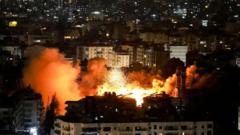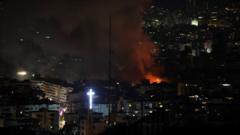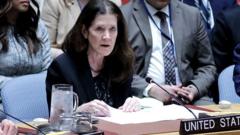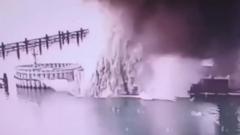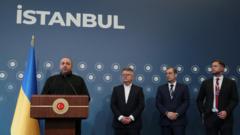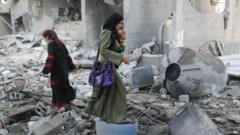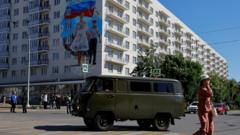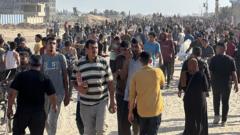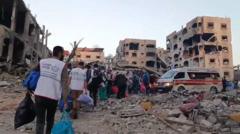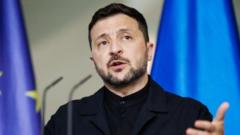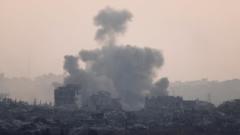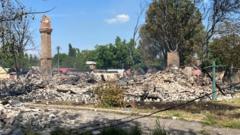Amidst fear and oppression in occupied Ukraine, residents face a battle against Russian attempts to eliminate their culture, including holidays and language, revealing stories of resilience and quiet rebellion.**
The Struggle for Identity in Russian-Occupied Ukraine: Voices from the Frontline**
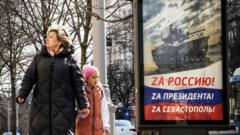
The Struggle for Identity in Russian-Occupied Ukraine: Voices from the Frontline**
Life under occupation reveals a repressive regime erasing Ukrainian culture and identity, as locals resist despite severe repercussions.**
In the shadows of Russian occupation, the voices of Ukrainians tell a harrowing tale of cultural erasure and resilience. One anonymous resident, referred to as Maria, highlights the systematic efforts by Russian authorities to suppress Ukrainian traditions and identity, stating, "Russians are trying to ban everything Ukrainian here: language, and also traditions. Even Ukrainian holidays are forbidden." The gravity of this repression comes as diplomatic efforts led by the US to negotiate peace loom, raising fears that Ukraine might be forced to relinquish territory occupied by Russia, including critical regions like Donetsk, Luhansk, Kherson, and Zaporizhzhia, as well as Crimea, annexed in 2014.
Evidence of the extent of repression includes the Kremlin's campaign requiring Ukrainians in occupied areas to adopt Russian citizenship, with reports suggesting that citizens face healthcare access issues and restrictions unless they comply. Maria, who participates in an underground resistance movement, describes the anxiety of her situation, using a Ukrainian proverb, "You have fear in your eyes, but your hands are still doing it."
Local narratives reveal an atmosphere fraught with mistrust. Individuals experience heightened danger in communication; one Ukrainian, Sofia, recalled her parents facing searches by Russian security forces, further complicating her ability to connect with them. As she navigates conversations, she often must read between the lines and keep her family’s safety in mind. Her family's refusal to accept Russian passports complicates their lives, limiting their mobility and access to necessities.
The case of Yeva illustrates the strains on familial relationships under surveillance and propaganda. Her sister, employed at a nuclear facility, often echoes pro-Russian sentiments—indicative of the pervasive influence of occupation. Instances of violence against dissent are alarming, as highlighted by the experience of another acquaintance whose relative was imprisoned for speaking with someone aiding the Ukrainian military.
Maria further underscores the watchful eye of the authorities who have installed surveillance systems and oppressive laws stifling dissent. Activists, volunteers, and journalists have been swept up in punishments—over 121 reported deaths during the conflict’s escalation.
Despite the oppressive environment, resistant movements continue to flourish in clandestine forms. Groups like Zla Mavka and Atesh have garnered attention with non-violent actions aimed at sustaining Ukrainian identity and morale, though their effectiveness in uprooting the occupying forces remains uncertain.
Maria’s reflections reveal a landscape marred by propaganda. Streets displaying Russian imagery and narratives encircle civilians daily, while educational systems indoctrinate youth with militaristic glorifications of the Russian military. The absence of independent journalism exacerbates challenges in verifying reports from these areas, blurring the truth against a backdrop of Russian dominance.
As Ukraine grapples with ongoing conflict, the struggle for identity amidst occupation remains a critical narrative—one of resilience, community, and the undying spirit to uphold Ukrainian culture in the face of adversity. This ongoing battle underscores the larger implications of geopolitical tensions and the fight for self-determination in occupied territories.


